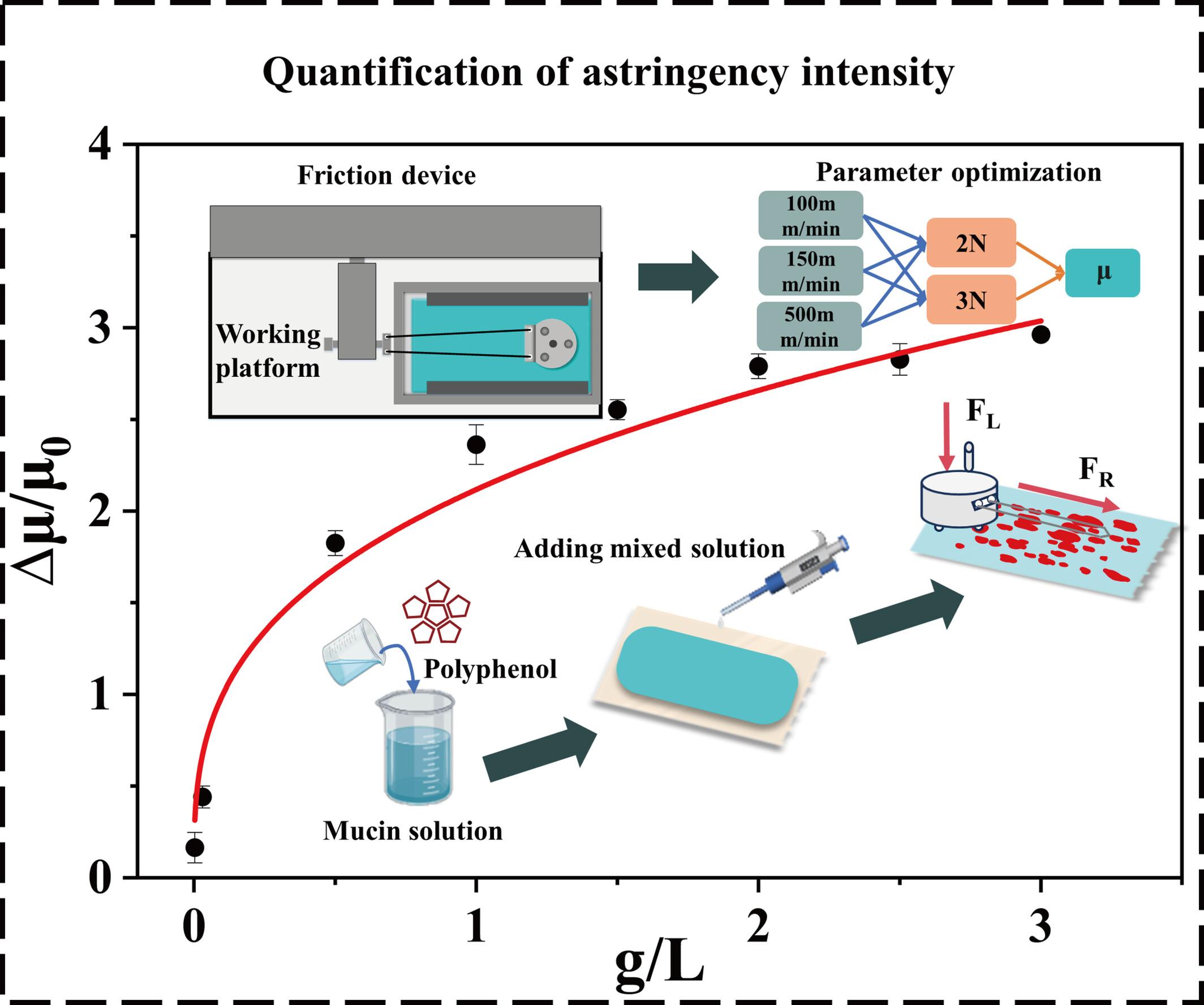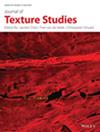An In Vitro Tribological Astringency Assessment Method Based on Astringency Perception Mechanism
Abstract
Astringency is a complex oral sensation characterized by dryness and constriction in the mouth. It is typically induced by polyphenol-rich foods and beverages such as wine and tea. The quantitative assessment of astringency intensity has become a prominent research focus in the food science field. In this study, an in vitro oral tribological method was developed based on a soft–hard friction interface. An oral-like sensory structure was constructed using biomimetic materials to replicate tongue–palate contact. The frictional behavior carried out in this structure is similar to that of the palate-tongue friction contact in the oral cavity. Thus, the structure allows for the detection of the effect of changes in the nature of food in the oral cavity on the tongue and the palate, which can be quantified by the coefficient of friction. Porcine gastric mucin (PGM), which shares functional similarities with salivary proteins, was employed as a model sensory material. This allowed the device to capture the interaction mechanisms between astringent compounds (e.g., tannins) and salivary proteins. A calibration curve was established by fitting friction coefficient data across a range of tannin concentrations. Subsequently, commercial wine samples were tested. The tribological system detected changes at the mucin–wine soft–hard interface, and the measured friction coefficient served as a quantitative indicator of astringency intensity. This study provides a feasible and reproducible experimental approach for the quantification of food astringency.


 求助内容:
求助内容: 应助结果提醒方式:
应助结果提醒方式:


